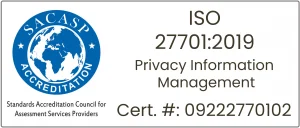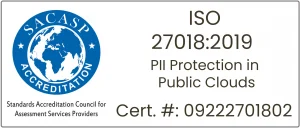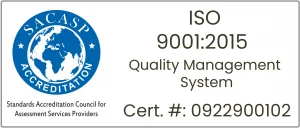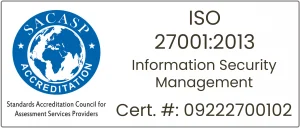© 2025 Macro Global. All Rights Reserved.
Traverse the article
The financial services industry in the UK has a robust consumer protection system, backed by the Financial Services Compensation Scheme, which safeguards depositors and investors in the event of financial institution failure. Single Customer View (SCV), a complete report on depositors and accounts, is essential to FSCS compliance.
The Exclusion File is critical, as it contains appropriate exclusions from SCV report. This blog goes into the complexities of the Exclusion File, describing its role in FSCS reporting, the various varieties, and the importance of maintaining proper compensation estimates.
SCV & Exclusion Files
The Single Customer View (SCV) file is a standardised electronic file that contains information about the eligible depositors, accounts, and their account balances. The Exclusions View file contains information regarding potentially eligible exclusions from the SCV, including:
Legally Dormant Account
- Any account that hasn’t had any transactions initiated by the depositor in the last 15 years.
Legally Disputed Account
- Accounts that have a formal notice of a conflicting claim or legal dispute regarding account proceeds.
- May originate from a non-account holder.
- Accounts subject to a direct debt recovery hold notice from HMRC.
- Accounts related to pending allegations of money laundering.
- The deposit is not eligible and should not be included in the SCV or Exclusions View file if a conviction has been made.
Sanctioned Account
- A financial account that is either held or managed by an individual whose name appears on HM Treasury’s “Consolidated list of financial sanctions targets.”
- Accounts held by individuals facing restrictions from national or international organisations.
Beneficiary Account
- Accounts where the holder does not have full ownership rights over the deposit, but they hold it for the benefit of others are known as beneficially owned accounts.
- A trust account and child trust funds are the illustrations of this type of account.
- The account holder Indicator needs to be ‘001’ for this account.
These are possibly qualifying deposits for which FSCS may postpone payment beyond the usual payout deadline to conduct further investigation.
The Exclusion Type column in the Exclusions View file must be filled with:
| Exclusion Type | Classification Code |
| Legally Dormant | LEGDOR |
| Legally Disputed | LEGDIS |
| Sanctioned | HMTS |
| Beneficiary accounts | BEN |
The SCV’s Exclusions Type column must be left unfilled, as none of the categories should be applicable to the records that have been entered.
Significant Considerations in Exclusion View File
- If an account is classified under multiple Exclusion Types, select only one classification in the following priority order: HMTS, LEGDIS, LEGDOR, and BEN. Accounts are not permitted to be included in both the SCV and Exclusions View file.
- The same customer may be present in both the SCV and Exclusions View file for distinct accounts. For example, a customer may maintain a joint account with their spouse (or another individual) that is classified as Legally Disputed in the Exclusions View file, in addition to an individual account in the SCV file.
- Nevertheless, the Exclusions View file must be updated to include all accounts associated with a sanctioned customer. Do not include records from sanctioned customers in the SCV file.
- If a customer is listed as the proprietor of an account in the SCV and as a trustee for a Beneficiary account in the Exclusions View file, they may be assigned a unique SCV ID for each file.
- In every other situation, the consumer should be assigned the same SCV ID for all their accounts.
- If there is no account to include in an Exclusions View file, the financial institution needs to confirm this with FSCS in the SCV Effectiveness Report.
SCV File Structure and Formats
The SCV file structure under the Financial Services Compensation Scheme (FSCS) consists of four tables –
Table A – Customer Details
- For customer details in SCV files, there are specific requirements for individuals and non-individuals.
- For individuals, the minimum name details needed are first forename and surname, with options for title, second forename, third forename, and previous name fields if available.
- Each record should pertain to a single customer; joint account holders should have individual records with unique SCV IDs.
- Do not include honors or qualifications in name fields. Date of Birth and National Insurance Number fields can be included if available but must be left blank if not known; avoid generic values.
- For identification numbers like Drivers Licence or Passport Numbers, use the Other National Identity Number field and specify the type of identifier in the Other National Identifier.
- For non-individuals like companies, business partnerships, associations, and charities, enter the non-individual’s name in the Surname field without populating the Title or Forename fields.
- For UK companies registered with Companies House, input the Company Number; for international companies, provide a business registration number in the Company Number field.
- In cases of incomplete names for individuals, efforts should be made to identify the customer’s name. If specific data is lacking, leave the field blank.
Table B – Contact Details
- Specific requirements for depositor records pertaining to address details is critical to ensure accurate compensation payments.
- For UK addresses, the minimum necessities include Address Line 1, Address Line 2, and the Postcode.
- Non-UK addresses should contain Address Line 1, Address Line 2, and the Country.
- Address fields should be filled in without gaps, prioritising Address Line 1, and Address Line 2.
- Avoid including irrelevant comments like “no address” or the depositor’s name in address fields.
- In cases of unknown addresses, leave the fields blank and denote the account with a ‘not fit for straight through payout’ (NFFSTP) status code, providing an explanation in the SCV Effectiveness Report.
- For customers who are “gone away,” mark the account similarly and include the last known address in the SCV for potential tracing.
- Address formats for British Forces Post Offices (BFPO) include the BFPO number in the final line, leaving the country field blank, and entering the BFPO postcode.
- Care of addresses should be formatted as “Care of Mrs Angela Orange” or “C/O Mrs Angela Orange”, and accounts with a care of address should be declared in the SCV Effectiveness Report.
- The address format for prisoners includes prisoner number in Address Line 1 with prison’s address on other fields. Alternatively, provide the customer’s home address as contact address, without prisoner number or special markings.
- For phone numbers and email addresses, ensure inclusion in designated fields without special characters, and prefix international numbers with ’00’.
- Compliance with this address and contact information protocols is crucial for regulatory and traceability purposes, especially during customer on-boarding and anti-money laundering efforts.
Table C – Details of Accounts
- Each individual account holder should have a distinct record in the Details of Accounts section, accompanied by the equitable division of the account balance.
- The Account Holder Indicator distinguishes account holder numbers for validation in the SCV and Exclusions View file.
- For accounts with a singular owner, the field must display 001. For accounts with two shared owners, enter 002 and so on.
- Efforts are made to enable speedy compensation within 7 calendar days of a deposit taker’s failure, requiring accounts categorised as “fit for straight-through payout” (FFSTP) or “not fit for straight through payout” (NFFSTP).
- The Account Status Code field in the SCV should express these categorisations, including rationales for NFFSTP status.
- The NFFSTP status might be applied due to reasons such as customer inactivity, address unavailability, special correspondence needs, or suspicion of fraud or money laundering without legal conviction.
- In instances of joint accounts, individual account holders should have separate records with distinct Account Status Codes.
- Additionally, periodic assessments are required to ascertain if customers qualify as micro, small, or medium enterprises (SMEs).
- The Product Type field is to reflect the original product term rather than the remaining term.
- These comprehensive guidelines ensure the accuracy and integrity of account-level data necessary for effective deposit protection management.
Table D – Aggregate Balance Details
Accurate account balances in the Single Customer View (SCV) and Exclusions View files are essential for effective compensation by the Financial Services Compensation Scheme (FSCS) when a deposit taker fails. Key points include:
- Compliance with the PRA Depositor Protection Rules is essential for proper balance calculations within the compensation limit of £85,000, reflecting the Compensatable Amount field per customer.
- For joint accounts, balances should be divided equally, unless evidence suggests otherwise. The Account Holder Indicator field denotes the number of account holders.
- Foreign currency balances must be converted to Pound Sterling, including the exchange rate, where accurate balance conversions are crucial.
- Even if a depositor holds zero balance, the account must be included in the SCV or Exclusions View file.
- Negative balances are disregarded for compensation calculations, ensuring the process focuses on positive account balances.
- In-flight transactions necessitate careful handling to maintain balance accuracy and continuity of access, as specified by Depositor Protection Rule 12.14.
- Interest and structured deposits require specific considerations, especially concerning accrued interest and complex structured deposit calculations.
- Temporary High Balances (THBs) are balances exceeding the compensation limit, often tied to significant life events, which may warrant special protection under FSCS processes.
File Format of SCV & Exclusion File
The SCV should follow one of three formats:
- Format 1: This format consists of four separate files for each table: customer details (Table A), contact details (Table B), details of accounts (Table C), and aggregate balance details (Table D).
- Format 2: This comprises two separate files; the first file contains customer details, contact details, and aggregate balance details together, while the second file contains the details of accounts.
- Format 3: In this format, all four tables are combined into a single file.
Each table contains an SCV Record Number to link the information to a unique customer, and the Exclusions View, prepared in the same format as the SCV, contains similar information but as a separate set of files.
The specific requirements for file names, file types, character sets, delimiters, encapsulation, allowed characters, and end-of-line indicators are further supplied to ensure compliance with FSCS standards.
File Type
Each file type needs to adhere to the FSCS accepted file types: Excel (.xlsx), XML (.xml), and Text (.txt or .csv) with specific formatting characteristics for text files.
File Name
File names for the SCV and Exclusions View files should adhere to specific formats.For the SCV file, the format of the file name should be “FRNxxx-YYYYMMDDHHMMSSSCVFormatW.yyy,” while for the Exclusions View file, it should be “FRNxxx-YYYYMMDDHHMMSSEXCFormatW.yyy“.In these formats:
- “FRNxxx” should be replaced with the six-digit ‘Firm Reference Number’.
- “YYYYMMDDHHMMSS” should be replaced with the ‘date and time’ the file was created.
- “FormatW” should be replaced with ‘specific labels’ depending on the content of the file; for format 1, name the labels as ‘Customerdetails’, ‘Contactdetails’, ‘Detailsofaccount’, and ‘Aggregatebalancedetails’. For format 2, name the labels as ‘Customerandaccountinformation’ and ‘Detailsofaccount’, and for format 3, name the label as ‘Full’.
- “yyy” should be replaced with a ‘supported file’ type, such as .xlsx, .xml, .txt, or .csv
Calculation of Compensation
- Calculation of aggregate balance and compensable amount in the Exclusions View and SCV files is done independently. This process allows FSCS to verify each file separately.
- During payouts, FSCS first ensures compensation from the SCV before addressing accounts in the Exclusions View.
- It also notes that it might not always be feasible to calculate compensatable amounts for Beneficiary accounts due to limited beneficiary visibility; in such cases, the Compensable Amount field in the Exclusions View file can be left blank or given a value of 0.00.
Macro Global: Redefining Regulatory Excellence
Macro Global (MG) is a prominent player in financial technology, specifically in the regulatory technology (RegTech) sector. Our FSCS SCV Enterprise Solution Suite offers comprehensive capabilities designed to meet the ever-increasing regulatory requirements and compliance demands of financial institutions.
- The suite includes two flagship products: SCV Alliance and SCV Forza.
- SCV Forza is an automation platform that streamlines regulatory operations, offering data aggregation, quality management, and privacy compliance.
- SCV Alliance is an audit solution for the FSCS SCV, offering 170+ well-classified risks for automatic validation and compliance with FSCS requirements.
- Both products leverage AI-based fuzzy logic with focus on handling data with precision, integrating with core banking systems, facilitating multi-level data validations, preventing duplication, and ensuring the rapid generation of accurate SCV reports and exclusion files.
- MG’s products have demonstrated success in periodic upgrades, ensuring compliance with FCA, and automation processes for validation, data enrichment, and account/customer rules with a focus on reconciliation and error resolution.
- Aims to enhance operational efficiency, ensure data accuracy, and reduce risks, complying with regulatory submissions.
- Complies with regulatory submissions for banks, building societies, credit unions, and other financial institutions.
- MG’s robust security measures include ISO standards, strong customer authentication, enterprise-grade security protocols, and stringent data retention policies.
Through rigorous auditing, integration with third-party databases, and a range of consulting services, MG empowers financial institutions to navigate and proactively manage their FSCS regulatory obligations with confidence and ease.
Experience Seamless FSCS SCV Regulatory Report Generation and Exclusion File Management and Accelerate Compliance with Macro Global’s SCV Enterprise Suite. Contact us now!
Talk to our regulatory consultants and prepare ahead for unexpected FSCS SCV reporting calls
Book a Free Consultation
Provide utmost accuracy and Complete Peace of mind
We will be able to help you in whatever the stage of your regulatory reporting programs
Related Posts
19 November 2025 FSCS Single Customer ViewRegulatory Technology
PRA PS24/25 & SS18/15: Detailed Compliance Bulletin for FSCS Limit Update
Key compliance actions under PRA PS24/25 and SS18/15 for FSCS limit updates, SCV changes and disclosure obligations.
18 November 2025 FSCS Single Customer ViewRegulatory Technology
Regulatory Update: FSCS Deposit Protection Limit Rising to £120,000 – Key FSCS SCV Reporting Changes for Banks and Deposit Taking firms
FSCS changes for 2025 raise the protection limit to £120k. See what banks and other Fis must do for SCV reporting, THB updates, and regulatory compliance under the new rules.
18 November 2025 FSCS Single Customer ViewRegulatory Technology
SCV and Cloud Adoption for PRA & FSCS Compliance: A Guide to Operational Resilience
Learn how cloud-enabled SCV strengthens PRA and FSCS compliance, improves operational resilience, and enhances depositor protection for financial institutions.














